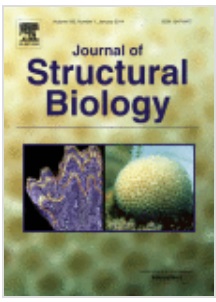We report a high resolution NMR structure and
15N relaxation studies of the first catalytic
cysteine half-domain (FCCH) of the mouse
ubiquitin-activating enzyme E1, together with interaction studies of FCCH and the other catalytic E1 subdomain – SCCH (second catalytic cysteine half-domain). In solution, mouse FCCH forms a well-defined six-stranded antiparallel
β-barrel structure, a common fold for many proteins with a variety of cellular functions.
15N relaxation data reveal FCCH complex backbone dynamics and indicate which residues experience slow intramolecular motions. Some of these residues make contacts with the polar face of
ubiquitin in the co-crystal structure of yeast E1 and ubiquitin. However, the titration of FCCH with ubiquitin does not show any visible chemical shift changes in the 2D
1H/
15N
HSQC spectra of the FCCH. The 2D
1H/
15N HSQC experiments performed both for each catalytic half-domain individually and for their equimolar mixture in the milimolar concentration range display no detectable chemical shift perturbation, suggesting a lack of interaction between the two subdomains unless they are covalently linked via the
adenylation domain.



